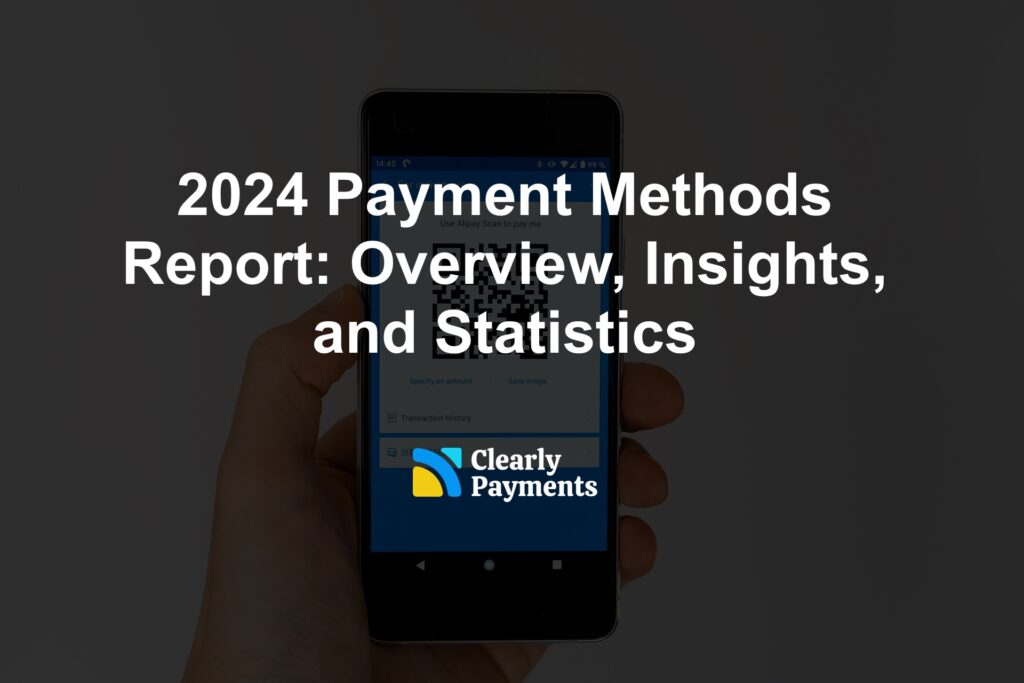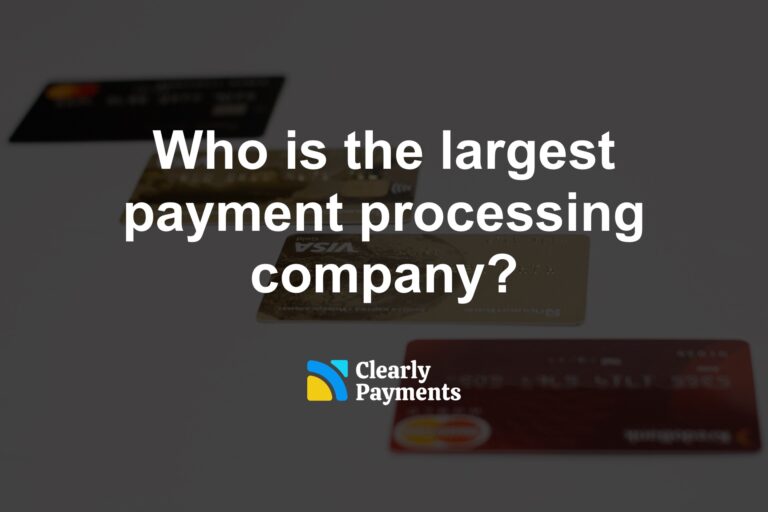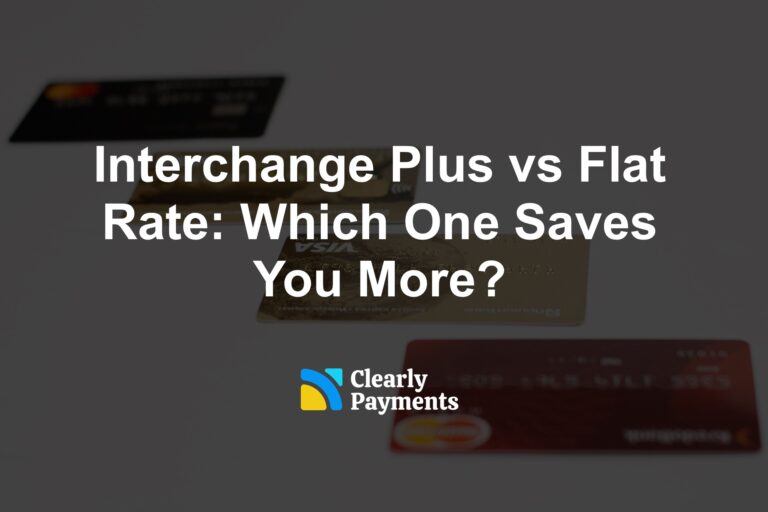The economy today is tech-driven and payment methods are a key part of that paradigm. From traditional options like credit cards to emerging solutions such as cryptocurrencies and biometrics, each payment method comes with unique advantages that cater to varying consumer needs.
This report covers the payment methods available, examining their usage, growth trends, and statistics to help businesses make informed decisions.
Table of Contents
The Popularity of Different Payment Methods
The table below shows the estimated popularity of each payment method as of 2024, including their global market share and main regions where each method is popular.
| Payment Method | Estimated Market Share (%) | Primary Regions of Popularity |
|---|---|---|
| Credit Cards | 20 | North America, Europe |
| Debit Cards | 15 | Europe, Canada, Australia |
| Digital Wallets | 30 | Global, especially Asia |
| Bank Transfers | 8 | Europe, Latin America |
| Real-Time Payments (RTP) | 5 | North America, Asia |
| Buy Now, Pay Later (BNPL) | 7 | North America, Europe |
| Cryptocurrencies | 3 | Global, especially tech-savvy |
| Direct Carrier Billing | 2 | Emerging Markets |
| Prepaid Cards and Vouchers | 4 | Europe, North America |
| QR Code Payments | 6 | Asia, Growing in N. America |
| Biometric Payments | 2 | Global, especially mobile-first markets |
| Cash Payments | 5 | Emerging Markets, some developed regions |
| Central Bank Digital Currencies (CBDCs) | 1 | Asia, Caribbean |
Credit Cards
- Overview: Credit cards allow consumers to make purchases on credit, paying later and often with interest. They remain a staple payment method globally.
- Global Usage: Credit cards represented 20% of global e-commerce transactions in 2023, a number projected to decline slightly as digital wallets grow in popularity.
- Regional Penetration: In North America, over 70% of online purchases are made via credit cards, while only 10% of European consumers prefer this method.
- Growth Trends: Despite the rise of alternative payment methods, credit card transactions continue to grow in sectors like travel, accounting for 60% of all travel bookings globally.
Debit Cards
- Overview: Debit cards draw directly from a user’s bank account, making them a popular alternative to credit for consumers who prefer to avoid debt.
- Global Usage: Debit cards accounted for 23% of online retail payments worldwide in 2023, with particularly high use in markets such as Canada, where over 60% of consumers prefer debit cards over credit.
- Security Features: With advances in fraud protection, debit cards now offer a high level of security, contributing to their growing popularity.
- Regional Preferences: In Europe, debit cards account for 45% of point-of-sale transactions, and the preference for debit over credit has increased by 30% over the past five years.
Digital Wallets
- Overview: Digital wallets, or e-wallets, are mobile or online applications that store payment information, allowing users to pay without physical cards.
- Market Share: As of 2023, digital wallets made up 49% of global e-commerce transactions, projected to rise to 54% by 2026.
- Popular Providers: PayPal, Alipay, and Apple Pay lead the market, with PayPal alone reporting over 430 million active accounts worldwide as of 2023.
- Regional Preferences: In Asia, digital wallets dominate with 71% of online transactions in countries like China, where over 90% of consumers use Alipay or WeChat Pay for daily purchases.
- Growth Forecast: Mobile wallets are expected to grow by 15% annually, with nearly 5 billion users by 2025, driven by smartphone proliferation and security advancements.
Bank Transfers
- Overview: Bank transfers involve direct account-to-account payments and are commonly used in countries with high trust in banking institutions.
- Europe’s Dominance: In Europe, 36% of all online transactions are completed via bank transfer systems like SEPA and iDEAL.
- Trust Factor: Bank transfers offer high security with lower transaction fees, making them popular for large transactions in the B2B sector, accounting for 40% of B2B payments in the EU.
- Growth: In regions such as Southeast Asia and Latin America, bank transfer payments have grown by 20% annually due to increasing banking access.
Real-Time Payments (RTP) & Instant Payments
- Overview: Real-Time Payments (RTP) systems allow funds to transfer instantly between bank accounts, offering 24/7 availability, even outside standard banking hours.
- Popular Examples: Interac e-Transfer (Canada), Zelle (U.S.), Faster Payments (U.K.), PayID (Australia), and UPI (India).
- Usage: RTP systems are growing rapidly; India’s UPI processed 74 billion transactions in 2023, while Zelle in the U.S. handled $1.6 trillion.
- Cost: RTP services are low-cost or free for consumers, typically around $0.50 to $1.50 per transaction or free for some users.
Buy Now, Pay Later (BNPL)
- Overview: BNPL allows consumers to purchase goods and pay in installments, typically interest-free, which has become popular among younger consumers.
- Market Growth: BNPL saw a 400% increase in usage globally since 2018 and is expected to grow 17% annually through 2028.
- Demographics: BNPL is particularly popular among Millennials and Gen Z, with 60% of BNPL users under 40 years old.
- E-commerce Penetration: BNPL now accounts for 5% of global e-commerce transactions and is projected to reach 9% by 2027.
- Regional Insights: Australia leads in BNPL usage, where 30% of consumers have used BNPL services at least once in the past year.
Cryptocurrencies
- Overview: Cryptocurrencies are decentralized digital assets used as payment in some online and physical stores, though their volatility remains a barrier for some consumers.
- Adoption Rate: Cryptocurrency payment usage remains niche but is growing, with over 420 million crypto wallet users worldwide in 2023.
- Cross-Border Appeal: Cryptocurrency payments are especially advantageous for cross-border transactions, with lower fees than traditional international bank transfers.
- Projected Growth: The cryptocurrency market for payments is expected to grow to $250 billion by 2030 as stability increases and regulatory frameworks develop.
- Stablecoins: Stablecoins like USDC and USDT are increasingly popular in e-commerce due to their reduced volatility, with stablecoin transactions growing 30% year-over-year.
Central Bank Digital Currencies (CBDCs)
Overview: Central Bank Digital Currencies (CBDCs) are digital forms of a country’s national currency, issued and regulated by the central bank. Unlike cryptocurrencies, CBDCs are state-backed and pegged to the value of the national currency, aiming to provide a secure and stable digital payment option.
Emerging Global Adoption: As of 2024, over 130 central banks are exploring or developing CBDCs, with countries like China, Nigeria, and the Bahamas already piloting or issuing CBDCs. China’s digital yuan (e-CNY), for instance, has already processed over $250 billion in transactions as of 2023.
Primary Use Cases: CBDCs are designed to enhance financial inclusion, streamline payments, and provide a government-regulated alternative to cryptocurrencies and private digital payment providers.
Retail vs. Wholesale CBDCs: There are two types of CBDCs:
- Retail CBDCs are designed for use by the general public, providing an alternative to cash.
- Wholesale CBDCs focus on interbank settlements, enhancing security and efficiency in large transactions between financial institutions.
Direct Carrier Billing
- Overview: Direct carrier billing (DCB) charges purchases directly to a user’s mobile phone bill, ideal for digital goods and small purchases.
- Usage: DCB is commonly used in emerging markets, where 1 in 5 mobile users relies on it for digital services like streaming or in-app purchases.
- Advantages: DCB offers high accessibility for consumers without bank accounts, accounting for 20% of digital services payments in parts of Southeast Asia and Africa.
- Market Growth: The direct carrier billing market is expected to grow 13% annually, with expanding reach due to increasing mobile penetration.
Prepaid Cards and Vouchers
- Overview: Prepaid cards and vouchers allow consumers to load funds in advance, useful for online purchases, especially in industries like gaming and digital entertainment.
- Market Share: Prepaid cards and vouchers make up 4% of global online payments, with higher usage in gaming and online entertainment sectors.
- Growth: The prepaid market is projected to grow by 10% annually as privacy-conscious consumers turn to prepaid options to limit personal information sharing.
- Popular Providers: Paysafecard and Vanilla Visa Prepaid Card dominate this space, with prepaid card usage increasing in Europe and North America.
Mobile Payments & QR Code Payments
- Overview: Mobile payments include apps that allow in-store and online purchases via smartphones, while QR code payments use scannable codes for quick transactions.
- Asia’s Leading Adoption: In China, over 85% of consumers use QR codes for payments, particularly with WeChat Pay and Alipay.
- Global Penetration: In 2023, 30% of in-store purchases worldwide were completed using mobile payment methods, expected to reach 42% by 2025.
- Growth: QR code payments are expanding in North America and Europe, with QR-based transactions projected to grow 25% annually as retailers adopt this contactless solution.
Biometric Payments
- Overview: Biometric payments use physical traits, such as fingerprint or facial recognition, for authentication.
- Consumer Confidence: 60% of consumers are comfortable using biometrics for payments due to increased security, with 2 in 3 smartphone users enabling biometric authentication.
- Adoption: Biometric payments are projected to reach $15 billion globally by 2025 as financial institutions incorporate them into mobile apps.
- Future Potential: As security becomes paramount, biometric payments are expected to grow 20% annually, particularly in the banking and retail sectors.
Cash Payments
- Overview: Despite the rise of digital methods, cash remains widely used in certain regions and for specific purchase types.
- Global Usage: Cash remains significant, accounting for 17% of all transactions worldwide. In regions like Latin America, cash-on-delivery is common for online purchases, making up 24% of e-commerce payments.
- Steady Decline: There has been a steady decline in cash usage, with cash transactions dropping by over 30% in some developed markets over the past five years.
- Decline in Developed Markets: In markets like the U.S. and Europe, cash payments are projected to decline 7% annually as contactless payments become more popular.
Table Comparison of the Payment Methods
Here’s a quick comparison of the major payment methods available today, highlighting their key features, costs, and typical use cases.
| Payment Method | Description | Processing Time | Cost | Use Cases | Popular Examples |
|---|---|---|---|---|---|
| Credit Cards | Bank-issued cards for borrowing funds | Instant | Varies (2-3% for merchants) | E-commerce, retail, travel | Visa, Mastercard, American Express |
| Debit Cards | Draws directly from user’s bank account | Instant | Low to none for consumers | Everyday purchases, ATMs, retail | Visa Debit, Mastercard Debit |
| Digital Wallets | Mobile apps storing payment info | Instant | Low to none for consumers | E-commerce, in-store, mobile payments | PayPal, Apple Pay, Google Pay, Alipay |
| Bank Transfers | Transfers between bank accounts | 1-3 days (ACH/SEPA), instant for wires | Low (ACH), higher for wire transfers | B2B payments, large purchases | ACH (U.S.), SEPA (Europe), SWIFT |
| Real-Time Payments (RTP) | Instant, 24/7 bank account transfers | Seconds | Low to none for consumers | P2P payments, small business | Zelle, RTP® Network, FedNow |
| Buy Now, Pay Later (BNPL) | Payment installments over time | Instant approval | Varies; may have interest | E-commerce, retail, large purchases | Afterpay, Klarna, Affirm |
| Cryptocurrencies | Digital, decentralized currency | Varies (typically minutes) | Low to moderate transaction fees | Cross-border payments, niche e-commerce | Bitcoin, Ethereum, USDC (stablecoin) |
| Direct Carrier Billing | Charges purchases to phone bill | Instant | Low for consumers | Digital content, in-app purchases | Fortumo, Boku |
| Prepaid Cards/Vouchers | Preloaded funds for purchases | Instant | Low activation fee | Gaming, online entertainment | Paysafecard, Vanilla Visa |
| QR Code Payments | Mobile payment using QR codes | Instant | Low or none for consumers | In-store payments, mobile commerce | WeChat Pay, AliPay |
| Biometric Payments | Payment via fingerprint or face ID | Instant | None for consumers | Mobile payments, secure transactions | Apple Face ID, Samsung Iris |
| Cash Payments | Physical currency | Instant | None | In-store purchases, cash-on-delivery | Traditional cash |
| Central Bank Digital Currencies (CBDCs) | Digital currency by central banks | Instant or within minutes | Likely low-cost | Everyday transactions, cross-border payments | e-CNY (China), Sand Dollar (Bahamas) |
Key Insights for Businesses
- Multichannel Flexibility: Offering diverse payment options can reduce cart abandonment rates by up to 40%, as customers are more likely to complete a purchase when their preferred payment method is available.
- Regional Adaptation: Different markets favor different methods, so understanding local preferences is crucial. For instance, integrating digital wallets is essential in Asia, while bank transfers are popular in Europe.
- Security Focus: Advanced payment methods like biometrics and digital wallets provide added security layers, enhancing consumer trust. Consumers increasingly prioritize secure options, with 85% reporting they prefer businesses that offer fraud protection.
- Future Potential of Digital Payments: Digital payments, especially mobile wallets, are projected to make up 73% of e-commerce payments by 2026, underscoring the need for businesses to optimize for mobile-first experiences.
Future Outlook of Payment Methods
The payment landscape is evolving quickly as technology advances and consumer preferences shift towards digital, mobile, and real-time solutions. Here’s what the future of payment methods looks like:
Dominance of Digital Wallets and Mobile Payments: Digital wallets are projected to surpass 50% of global e-commerce transactions by 2027. As smartphone use increases, especially in developing regions, mobile wallets and QR code payments will continue to expand rapidly, becoming the preferred choice for consumers due to convenience and security.
Rise of Real-Time Payments (RTP): Real-time payment systems are expected to grow by 15% annually, as consumers and businesses alike demand instant fund transfers. This demand has spurred initiatives like FedNow in the U.S. and similar systems in Europe, Asia, and Latin America, making 24/7 payments accessible worldwide.
Growth of Buy Now, Pay Later (BNPL): BNPL services are anticipated to grow by 20% annually, particularly among younger generations seeking flexible payment options without credit card interest. However, this growth may face regulatory scrutiny as governments look to protect consumers from potential debt risks.
Cryptocurrencies and Stablecoins: Cryptocurrencies and stablecoins are expected to see greater adoption as transaction fees decrease and regulatory clarity improves. While still niche, these options could play a larger role in cross-border payments, with stablecoins providing a more stable digital currency alternative.
Expanding Role of Central Bank Digital Currencies (CBDCs): With over 130 countries exploring or developing CBDCs, these digital currencies are expected to play a pivotal role in the next decade. CBDCs aim to offer secure, stable, and state-backed digital payment alternatives, with regions like Asia leading adoption.
Decline of Cash Use: Cash payments are projected to decline by 3% annually as contactless and digital alternatives become more widespread. While cash will remain relevant in some regions, digital transformation and the demand for speed and convenience will drive further reduction in cash transactions.
Increased Security and Biometric Payments: As fraud concerns grow, biometric payment methods like fingerprint and facial recognition are gaining traction. These methods add a layer of security, and with consumer comfort rising, biometric payments are anticipated to grow by 30% annually, becoming a standard for mobile and in-store transactions.
The future of payments is headed toward a digital, real-time, and highly personalized ecosystem where consumers have access to diverse, secure, and efficient methods. For businesses, keeping pace with these changes will be essential for customer satisfaction, operational efficiency, and global competitiveness.




